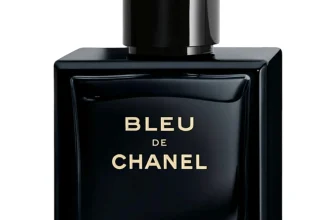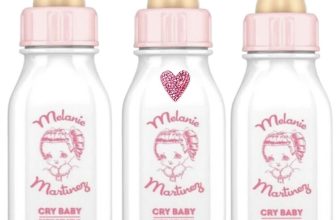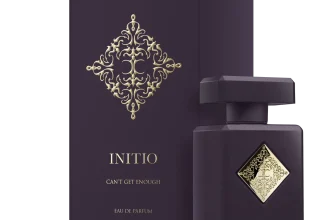
Timeless 1980s Fragrances That Define an Era
The 1980s were a decade of bold choices—big hair, neon spandex, and colognes that could fill a room. While some trends (cough shoulder pads cough) deserve to stay in the past, the era’s fragrances have aged like fine wine. Many 80s colognes for men still command attention today, blending nostalgia with timeless sophistication. Let’s revisit these olfactory legends, compare their staying power, and unpack why they’re still turning heads today.
The Cultural Impact of 1980s Fragrances
The 1980s represented excess, ambition, and bold self-expression. Men’s fragrances of this era weren’t merely scent accessories but powerful statements of identity. According to fragrance historian Michael Edwards, the 80s created “olfactory landmarks that defined masculine presence through distinctive, unforgettable compositions.” These fragrances became intrinsically linked to the power-dressing culture, where appearance was everything.
Unlike today’s often subtle, unisex fragrances, 80s men’s colognes were deliberately potent and unmistakably masculine. They projected confidence and sophistication at a time when corporate culture celebrated assertiveness. The staying power of these fragrances lies partly in their cultural significance—they represent a distinctive masculine archetype that remains appealing across generations.
13 Iconic 80s Colognes That Remain Relevant Today
1. Drakkar Noir by Guy Laroche (1982)

Top Notes








Middle Notes







Base Notes










Perhaps no other fragrance captures the essence of 80s masculinity better than Drakkar Noir. With its distinctive blend of lavender, citrus, spicy berries, and woody notes, Drakkar Noir became one of the best-selling men’s fragrances of all time. Its sleek black bottle perfectly complemented the power-dressing aesthetic of the era.
While reformulations have occurred over the decades, Drakkar Noir retains its fundamental character. Modern men appreciate its versatility—appropriate for both office settings and evening occasions—making it a timeless choice that bridges generational preferences.
2. Polo by Ralph Lauren (1978)

Top Notes






Middle Notes








Base Notes







Though technically introduced in the late 70s, Polo gained massive popularity in the 1980s. Its forest-green bottle containing an aromatic blend of leather, tobacco, and pine became a status symbol among upwardly mobile professionals. The fragrance embodied the preppy, exclusive lifestyle that Ralph Lauren’s brand represented.
Today, Polo enjoys a renaissance among younger consumers seeking authentic vintage experiences, while maintaining loyalty from its original demographic. Its enduring popularity demonstrates how quality formulations can transcend changing market preferences.
3. Kouros by Yves Saint Laurent (1981)

Top Notes





Middle Notes








Base Notes








Provocative and unforgettable, Kouros established itself as a boundary-pushing fragrance. Its complex composition of honeysuckle, leather, civet, and aldehydes created a distinctive scent profile that perfume experts consider one of the most innovative masculine fragrances of the century.
Despite its potency—sometimes considered controversial in today’s more subdued fragrance landscape—Kouros maintains a dedicated following. Its recognition value makes it instantly identifiable, allowing wearers to make distinctive statements in a market flooded with interchangeable scents.
4. Fahrenheit by Christian Dior (1988)

Top Notes








Middle Notes








Base Notes






Launched late in the decade, Fahrenheit revolutionized men’s fragrances with its unprecedented combination of leather, honeysuckle, and a distinctive “gasoline” note. This innovative composition created a fragrance that fragrance critics cite as one that defied conventional masculine archetypes while maintaining broad appeal.
Fahrenheit remains in Dior’s main collection and continues to attract both loyal wearers and new enthusiasts. Its distinctive character makes it immediately recognizable yet impossible to adequately describe—ensuring its place in fragrance history.
5. Obsession for Men by Calvin Klein (1986)

Top Notes







Middle Notes








Base Notes






Calvin Klein’s provocative marketing campaigns helped establish Obsession as more than just a fragrance—it became a cultural phenomenon. Its oriental-spicy composition with amber, musk, and sandalwood created a seductive, memorable trail that perfectly aligned with the decade’s uninhibited approach to sexuality.
Market research indicates Obsession continues to perform strongly among both nostalgic consumers and younger demographics discovering its distinctive appeal for the first time. Its slightly sweet, spicy character feels simultaneously vintage and modern.
6. Aramis by Estée Lauder (1965, but peaked in the 80s)

Top Notes







Middle Notes





Base Notes







Though introduced earlier, Aramis reached its cultural zenith during the 1980s professional boom. This leathery, spicy aromatic became synonymous with successful businessmen and professional accomplishment.
Today, Aramis represents authentic masculine prestige in a market increasingly focused on transient trends. Its stable formulation has changed little over decades, providing a consistent experience that loyal customers can depend on year after year.
7. Cool Water by Davidoff (1988)

Top Notes







Middle Notes




Base Notes





Arriving at the decade’s end, Cool Water revolutionized men’s fragrances by establishing the modern aromatic aquatic category. Its fresh, marine-inspired notes created an entirely new direction for masculine scents, moving away from the heavier compositions that dominated earlier in the decade.
According to industry analysts, Cool Water remained one of the top-selling men’s fragrances for over three decades. Its influence extended beyond its own success, inspiring countless aquatic fragrances that dominate today’s market.
8. Azzaro Pour Homme (1978)

Top Notes








Middle Notes






Base Notes





Like Polo, Azzaro Pour Homme gained its massive following during the 1980s. Its aromatic fougère composition with lavender, anise, and woody notes became a signature scent for confident professionals. The fragrance embodied sophisticated European masculinity with its impeccable balance and refinement.
Its continuing popularity stems from remarkable consistency—fragrance connoisseurs note that despite ownership changes, Azzaro Pour Homme has maintained its essential character better than many contemporaries that underwent significant reformulations.
9. Jazz by Yves Saint Laurent (1988)

Top Notes









Middle Notes




Base Notes







With its distinctive checked bottle design and sophisticated composition, Jazz represented the evolution of 1980s masculinity toward the decade’s end. Its combination of spicy, green, and woody notes created a versatile fragrance appropriate for both business and leisure settings.
Though less widespread than some contemporaries, Jazz maintains a dedicated following among fragrance enthusiasts who appreciate its unique positioning between classic and contemporary masculinity.
10. Antaeus by Chanel (1981)

Top Notes






Middle Notes




Base Notes




Chanel’s contribution to 1980s masculinity came through Antaeus—a powerfully masculine leather-focused composition. Named after the Greek mythological figure who derived strength from earth, Antaeus presented a sophisticated alternative to some of the decade’s more commercially-oriented fragrances.
Its continuing appeal lies in its unmistakable character and the prestige of the Chanel brand. According to luxury market researchers, heritage luxury houses have experienced renewed interest as consumers seek authentic experiences with historical significance.
11. Lapidus Pour Homme by Ted Lapidus (1987)

Top Notes







Middle Notes










Base Notes








This opulent Oriental fragrance embodied 1980s excess through its rich combination of spices, amber, and vanilla. The ornate bottle with its gold detailing perfectly captured the aesthetic sensibilities of late-80s luxury.
While less prominent than some global bestsellers, Lapidus Pour Homme maintains a loyal following and represents an authentic time capsule of 1980s olfactory preferences.
12. Bijan for Men (1981)

Top Notes









Middle Notes










Base Notes










Often cited as one of the most expensive fragrances of its era, Bijan represented exclusive luxury. Its spicy-woody composition came packaged in a distinctive circular bottle that signaled its positioning as a status symbol rather than merely a fragrance.
Today, Bijan continues to represent conspicuous luxury and maintains its position as a niche prestige fragrance with particular appeal among connoisseurs who appreciate its historical significance.
13. Grey Flannel by Geoffrey Beene (1975, popular through 80s)

Top Notes





Middle Notes







Base Notes





This violet-dominant aromatic became a sophisticated staple throughout the 1980s. Its distinctive green bottle wrapped in grey flannel fabric made it instantly recognizable and aligned perfectly with the decade’s focus on designer branding.
Grey Flannel remains in production and maintains a dedicated following among those who appreciate its unique character. Its continuing availability at accessible price points has introduced it to new generations of fragrance enthusiasts.
Comparative Analysis: What Made These Fragrances Stand Out?
To understand the enduring appeal of these classics, let’s examine their key characteristics compared to contemporary fragrance trends:
| Characteristic | 1980s Classics | Contemporary Trends | Implications |
|---|---|---|---|
| Projection | Strong, room-filling presence | Generally lighter, more intimate | 80s classics make stronger statements in social settings |
| Complexity | Multi-layered, evolving compositions | Often simpler, more linear formulations | Classics reveal different facets throughout wear time |
| Distinctiveness | Highly recognizable signatures | Often more interchangeable | 80s fragrances have higher recognition value |
| Masculinity | Deliberately and unapologetically masculine | Trend toward unisex compositions | Classics represent confident masculinity |
| Longevity | Formulated for all-day presence | Often require reapplication | Better value proposition for many consumers |
| Cultural Impact | Established cultural associations | Vintage versions of 80s classics are highly sought after | Classics evoke nostalgic connections |
| Reformulation | Most have undergone some changes | Constantly evolving | Vintage versions of 80s classics highly sought after |
As this comparison demonstrates, the defining characteristics of 1980s fragrances often stand in contrast to contemporary trends, explaining their continuing appeal as distinctive alternatives to modern offerings.
The Science Behind Their Staying Power
Beyond cultural significance, certain scientific factors explain why these fragrances remain effective decades after their introduction. According to research published in the Journal of Sensory Studies, fragrances with certain structural elements tend to maintain their appeal across generations.
The significant concentration of natural ingredients in many original 1980s formulations created complex scent profiles that evolved throughout wear time. While industry reports indicate that contemporary fragrances often contain higher percentages of synthetic components for consistency and cost efficiency, many classics contained substantial proportions of natural oils and absolutes.
Additionally, the higher concentration of fragrance oils common in 1980s formulations (often in the eau de parfum or parfum range) created stronger projection and longevity than many contemporary offerings marketed as eau de toilette or cologne.
The Revival of Vintage Fragrance Appreciation
The enduring popularity of these 1980s classics connects to broader trends in vintage appreciation. According to consumer behavior research, millennial and Gen Z consumers increasingly seek authentic experiences with historical significance—explaining the renewed interest in classic fragrances.
“Fragrance communities have contributed significantly to this revival,” explains fragrance historian Elena Vosnaki. “Online forums and social media groups dedicated to vintage fragrance appreciation have introduced these classics to generations who weren’t alive during their original popularity.” This digital preservation of fragrance knowledge has created new markets for these enduring classics.
Additionally, the cyclical nature of fashion—with 1980s aesthetics experiencing significant revivals in recent years—has renewed interest in the decade’s defining scents. As contemporary fashion draws inspiration from 80s silhouettes and design elements, the fragrances that originally accompanied these looks gain renewed relevance.
Reformulations: The Controversy Behind Classics
No discussion of vintage fragrances would be complete without addressing reformulation—the often controversial practice of altering original formulas due to regulatory changes, ingredient availability, or cost considerations.
The International Fragrance Association (IFRA) has implemented numerous restrictions on traditional fragrance ingredients over recent decades, forcing reformulations of many classics. Oakmoss restrictions particularly affected fragrances like Azzaro Pour Homme and Antaeus, while concerns about animal-derived ingredients impacted compositions containing civet, musk, and castoreum.
Fragrance communities often debate whether modern versions of these classics maintain the essence of their original formulations. Vintage bottles of original formulations command premium prices on secondary markets, with some collectors paying hundreds or even thousands for sealed original bottles from the 1980s.
How to Wear 80s Powerhouses in Modern Contexts
For those interested in exploring these classics, understanding how to adapt them to contemporary expectations proves essential. Unlike the liberal application common during their heyday, today’s approach to these potent compositions requires restraint.
Fragrance experts recommend applying these classics more sparingly than their modern counterparts. According to style consultants, “One or two sprays of an 80s powerhouse can provide equivalent projection to four or five sprays of a contemporary composition.”
Additionally, consider contextual appropriateness—these fragrances often perform best in evening settings, formal occasions, or colder weather where their projection can be appreciated without overwhelming.
Collectibility and Investment Potential
Beyond personal enjoyment, many of these fragrances have developed significant collectible value. Auction data shows that sealed vintage bottles of discontinued versions or original formulations can appreciate considerably over time.
Limited edition releases from this era, such as commemorative bottles of Kouros or special Polo formulations, have particular appeal among collectors. The investment potential adds another dimension to the appeal of these classics, with some enthusiasts maintaining collections that serve both personal and financial interests.
Conclusion: Timeless Appeal in an Ever-Changing Market
The continuing popularity of 1980s men’s fragrances demonstrates that quality and character can transcend changing trends. While contemporary fragrance marketing often focuses on celebrity endorsements and striking bottle designs, these classics continue to succeed based primarily on their olfactory merits.
For modern consumers, these fragrances offer connections to a distinctive era of masculine expression—confidence without apology, presence without hesitation. Their continuing market presence speaks to the timeless appeal of well-crafted scent compositions that rise above merely following trends.
Whether worn for nostalgic reasons, appreciation of their unique compositions, or simply for their distinctive character, these 1980s classics continue to turn heads and start conversations. In a fragrance landscape often criticized for homogeneity, they represent authentic character and unmistakable identity—qualities as appealing today as they were four decades ago.
What’s your experience with these classic fragrances? Have you discovered any 80s treasures that deserve wider recognition? The conversation around these timeless scents continues to evolve, much like the complex fragrances themselves.
Got a favorite 80s cologne? Share your throwback pick in the comments!








